Buyer's Guide to Anchors - Part I
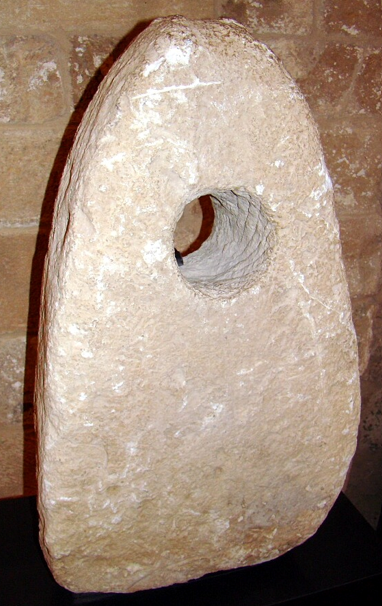
Anchors can be as basic as a rock at the end of a rope, and that’s what they were for centuries of ancient seafaring.
But modern boaters want some engineering in their “ground tackle” to assure they’ll stay put, particularly when anchoring for extended periods or in exposed locations.
Surprisingly, weight is not the primary attribute of a good anchor. The challenge for most recreational boats is to design a device with maximum holding power and minimal weight, so that it can be lowered and raised easily. Making that design compact is also important, since space is always at a premium on smaller boats. And, for the vast majority of the market, the price is also important.
Moving to medium and large yachts with power anchor windlasses and through-the-stem bow storage for the anchor, the weight and storage space as well as the price become less critical but the design that produces the most holding power and tensile strength becomes more important.
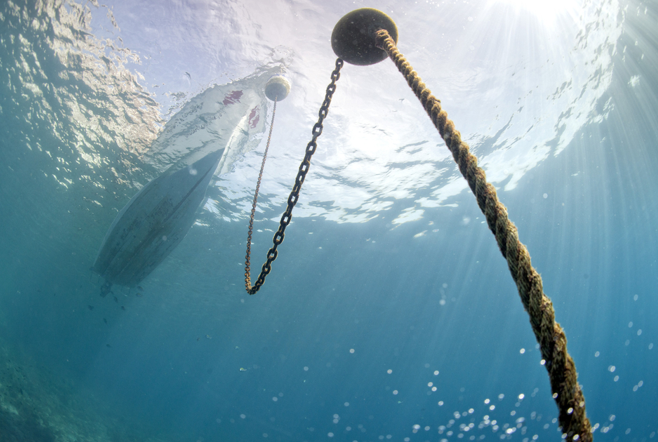
There are now dozens of designs, but there are two “patent” anchors that are favorites among recreational boaters because they produce a lot of holding power for minimal weight. These are fluke anchors and plow anchors.
Fluke/Danforth Anchors are probably the most common anchors among recreational boaters and anglers. They depend on smart engineering rather than weight for holding power. (They’re also known as Danforth anchors because the best-known variety was invented by West Coast sailor Richard Danforth in the 1940’s.)
Fluke anchors depend on two more or less flat, pointed flukes to dig into bottom when pressure is exerted on the shank. They stow flat, a huge plus in small boats—and most variations are reasonably priced. They’re probably the most common anchor on recreational boats under 25 feet worldwide.
Fluke anchors have impressive holding power for their weight, and most are moderately priced, as well.
CQR/Plow Anchors
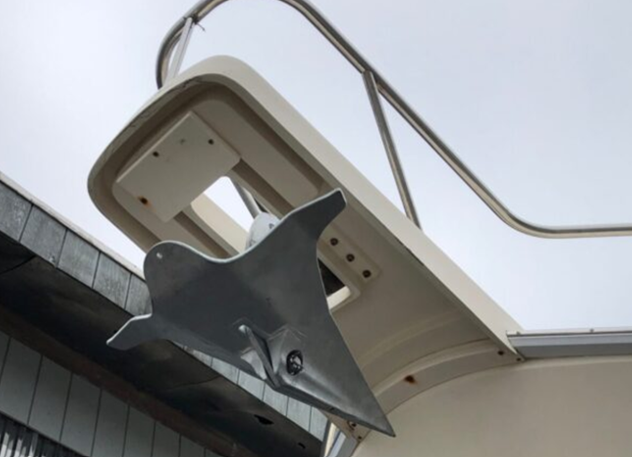
Plow anchors look more or less like agricultural plows. They furrow their way into bottom until they hold in most situations. The original CQR label stood for Clyde Quick Release, a 1933 design patented in the UK by mathematician Geoffrey Ingram Taylor. It was later rebranded as “secure” by Lewmar, one of the largest anchor manufacturers today.
Plows have outstanding holding power, and improved plow designs like the Rocna will turn themselves over and dig in if they land upside down or are flipped by changing wind or current once set.

A disadvantage of the plow designs is that they are bulky for a given holding power, which makes them hard to store. However, for boats with a through-the-stem anchor system including an electric windlass, they are ideal, fitting neatly on the bow peak of many designs. Though this setup costs a lot more than a simple Danforth stowed beneath a hatch, it takes much of the work out of anchoring.
Plows tend to be more expensive than most other types of anchors, with the larger models priced into the low five figures.
A 20 kg (44 lb) Rocna is designated suitable for boats from about 35 to 50 feet long. The 70 kg (154-lb) model is suitable for most 60 to 90’ yachts under most reasonable sea conditions.
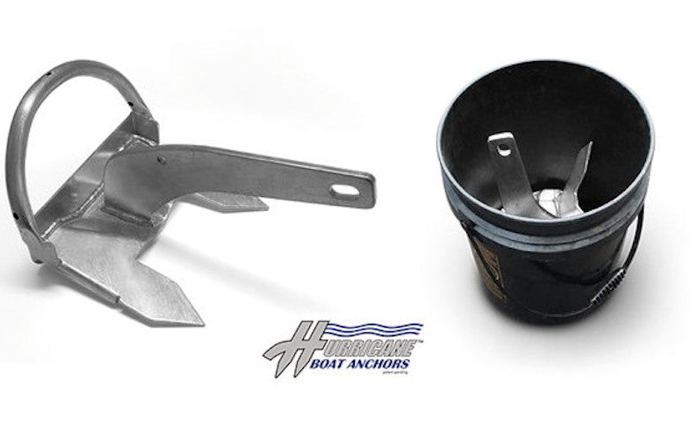

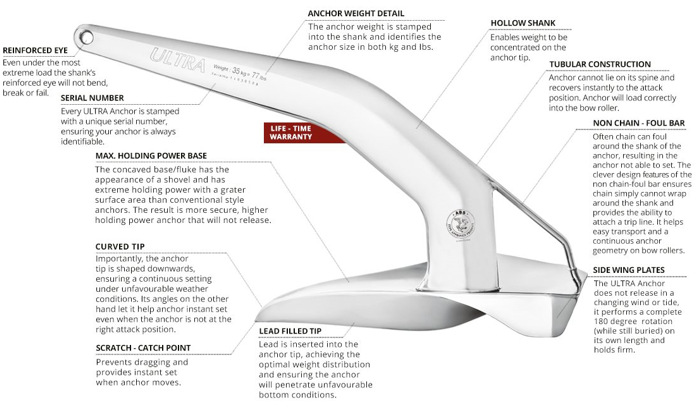

Bruce Anchors are a “claw” design similar to the plow, but with upswept fins that help to cup the bottom once the tip penetrates. A version of these anchors are the massive devices used to secure many North Sea oil rigs in place, with some as large as the 12,000 KG models seen here. But these claw style anchors are also available in sizes to fit boats and yachts throughout the recreational range.
The smallest are tiny 2.2 lb (1 kg) models priced at less than $15, primarily suited to kayaks and canoes. A number of companies make Bruce-style anchors, with Lewmar offering the greatest variety. The original Bruce Anchor Group operated from the 1970’s to the early 2000’s, but stopped production when their patent expired.
Beach Anchors
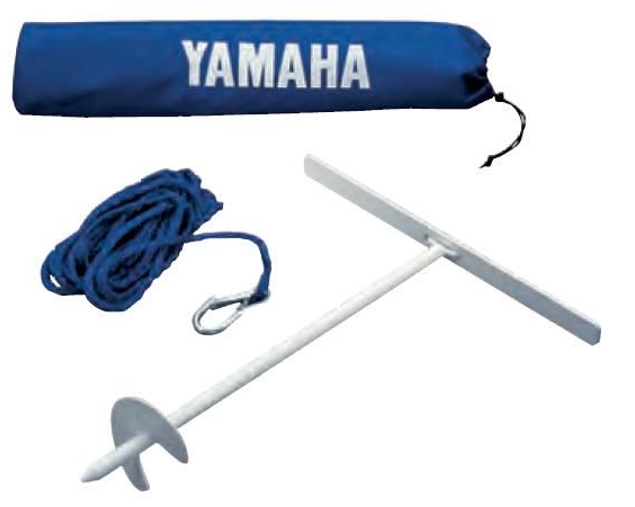
Beach anchors or sand stakes are simple screw or auger devices that can be driven into firm sand on the beach to go ashore for a picnic. They’re compact and light weight, making them useful on smaller craft where a stowing a conventional anchor can be problematic. Most have a removable handle, and they stow in a compact bag. They don’t have the holding power of standard anchors, however, and are useless in the water. Price is around $35 for most.

Navy anchors depend on weight as much as design to hold bottom. While they’re fine for massive ships, they’re less useful on recreational boats and yachts. However, they’re common anchors on dinks, rowboats and small skiffs used inland. Roloff is among the best-known maker of navy style anchors for recreational boats, offering models from 5 to 28 pounds in both basic cast iron and vinyl-clad. The vinyl clad designs are rust resistant and also don’t mar boat finishes; https://www.roloffmfg.com.
Mushroom anchors work well in mud, sand or weed bottoms for holding small boats in moderate conditions. They’re typically sold in weights from 8 to 18 pounds.
River anchors have three broad flukes plus a heavy shank, making them good for mud and sand but also for gravel and rock bottoms when holding small boats on inland waters. Weights typically range from 8 to 30 pounds.
Rock Anchors
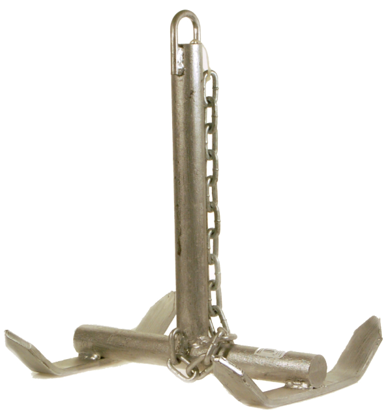
Anchors like the Danielson Rocking Anchor are designed specifically for lodging themselves into rock bottoms in big rivers like the Columbia, but they include a tripline or breakaway chain attachment that flips the anchor over and retrieves it bottom first if it’s lodged too securely to be pulled free otherwise.
How Many Anchors Do You Need?
While a day boat or inshore fishing boat can get along fine with a single anchor of the right size and design, yachts that are likely to anchor for days or weeks in one spot need at least two anchors rigged and ready. Also, if you regularly operate in areas where currents, waves and wind could put you on a dangerous shore, a second anchor rigged and ready is a must in case your main anchor is lost or is overwhelmed by conditions.
In part II, we’ll look at the many sizes and styles of anchors for recreational boats currently on the market.